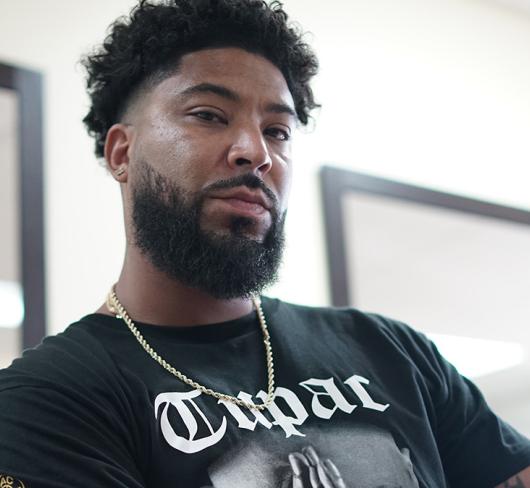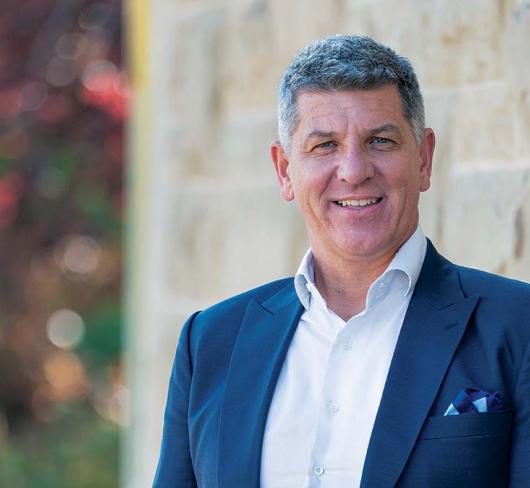
Teaching and Learning While Black
When I was in high school in Toronto’s east end there were rules that impacted school culture but didn’t necessarily influence student success. One of those rules was a no-hat policy. Students were not permitted to wear hats inside the school. Naturally, I wore my hat all the time. I consciously kept it on and waited for a teacher to tell me to take it off. I felt even better if I was “caught” wearing my hat in class – more people to witness me challenging authority. At the time, I defied the rule because I had come to the subconscious conclusion that the system was silencing me. I felt that wearing my hat was part of my identity and when I looked around, this rule – like other aspects of school culture – seemed to mainly target black students. As a black teenager, I felt this over two decades ago. As a black teacher, it seems that little has changed in the way black boys experience schooling.
My resistance to school culture in general was in response to a feeling that suggested I did not belong. I had been told that the times I answered questions or commented during whole-class discussions without putting my hand up, times in school when I was actually engaged and excited about a topic, indicated a lack of self-regulation. On many occasions, when I would earn a stellar grade on a test or assignment, I was told by my teachers that they were pleasantly surprised that I actually did well and knew the content. A few educators would question a good test score, implying that it had not been honestly earned. I undoubtedly picked up on the undercurrents of these comments but was not articulate or bold enough to name or confront them. So, I wore my hat. I came late. I reflected hip-hop culture, which I identified with. Unfortunately, like other nonmainstream, non-Eurocentric forms of expressions, my identity was viewed as contrary to the implicit culture of my school.
If we look at aspects of school culture like dress code policies, ineffective teaching strategies such as assuming a lesson taught is a lesson learned or failing to establish cultural relevance, and procedures that facilitate pathways into special education, it would not take long to notice that our revisions to curriculum and improvements to teaching practices fail to address the specific needs of black students. As educators, while we have made efforts to address issues of sexuality, diversity and ability in our school system, making changes to how and what we teach as well as removing physical barriers, we have not sufficiently dealt with the issue of race. We have not sufficiently addressed extensive research that says black students, and specifically black boys, consistently deal with microaggressions, stereotypes, lowered expectations, culturally biased IQ testing, over-representation in non-academic strands, ignorance about black culture and a lack of black role models as teachers.
In the 1980’s, the Toronto Board of Education’s study, Post-Secondary Plans of Grade Eight Students, reported that 50 percent of black students indicated their intention to go to university, but 35 percent of these same students eventually found themselves in special education classes (1983). The trend continues well into today as a 2013 study conducted by the Toronto District School Board shows. Looking just at students who are enrolled in special education programs, 14 percent of black students are on Individual Education Plans for sub-par academic performance compared to just 0.4 percent of black students who are in gifted programs.
When we step away from academics and look at regulation, studies indicate that black students are suspended at over twice the rate of their white counterparts. In fact, nearly half (42 percent) of all black students will have been suspended at least once, compared to only 18 percent of white students, by the time they leave high school. Is it any wonder that the push-out rate among black students is double that of white students? Juxtapose all the changes we have made to address other segments of our school communities with the lack of changes made for black students and ask yourself this question: What is going on?
Recently, Grant Linton and John Rieti of CBC News Toronto did a series of interviews with four grade 12 students at Fletcher’s Meadow Secondary School in Peel highlighting many of the challenges black kids face simply because they are black. “To be honest,” says student Rayshawn Ross, “to be black in a Peel school, just feels like, there may be a little bit of a difference. There’s kind of that stereotype that is pushed more towards you, that’s different than everybody else.”
Over the last two years, the Toronto Star has published several accounts of the experiences of black male students. Perhaps most prominent was coverage of York University professor Carl James’ study, Towards Race Equity in Education (2017). James argues that school boards around the Greater Toronto Area are not doing enough to collect race based data. He suggests that, “If you want to be able to work with particular groups of students, you should know who they are, otherwise you might be putting (resources) where they’re not addressing the issues directly, and that doesn’t help.” Seems obvious. A census every five years is not enough. Actually, a census is not enough. Dr. George Dei’s study, Anti-Racism Education: Theory and Practice, indicated that black students experience an “othering” that results in a fractured view of schooling and the way it operates, leading to their disproportionally high push-out rate (Dei, 1996).
What is “othering?” Student Jace Smith from the CBC documentary explains it this way: “I don’t really think of it as being different from anybody else, but I guess people look at you kind of differently. People see me and they kind of think automatically that I might be maybe trouble or in a gang or something like that. But that’s the opposite of me.” Because Jace, as he describes himself, is “bigger” and “darker skinned,” he experiences his world from two separate views. He understands how he feels about himself while simultaneously feeling or perceiving how others view him, simply based on the skin he is in. Statistics and experiential evidence show that this experience happens long before high school. Take the example of the black six-year-old who was recently handcuffed for having a “violent” temper tantrum at her school in Mississauga. An advocate for the child’s mother reminded us all that, “handcuffs are used for violent criminals [and offenders]…I don’t know what a child could have done that would require them to use that level of restraint” (Hudes, 2017). She was six. How must she have been viewed by those intervening that they decided handcuffs were an appropriate response?
Extensive research indicates that many black students share similar challenges. Data clearly points to some of the root issues. The overrepresentation of black students in non-academic schools, lower expectations, culturally based standardized testing, lack of culturally relevant sources within the curriculum and lack of black teachers all contribute to enduring stereotyped perceptions of black students. Undoubtedly, many boards are attempting to figure out ways to reflect our ever-evolving contemporary culture by finally asking the question, “What is happening in our schools that negatively impacts black students and their educational outcomes and what can we do about it?
Many board and school dress code policies are outdated, sexist and racist. Dress code policies like no headgear and no sagging pants implicitly suggest to particular students that their bodies are to be scrutinized and their culture is not valued. For many black students, whose point of aesthetic reference often stems from hip-hop culture, this denial of their culture in the school relays a message to them that they are not important. Devaluing our students and damaging their self-perceptions is not an aim of education. So why impose rules that do just that?
When we revise our paradigms for education to reflect more inclusive practices through strategies like differential assessments of learning, dissolving narrow school policies like dress codes and recreating teaching strategies and methods that put student’s realities, cultures and experiences at the centre, we will see an altered and more practically improved landscape for public education. I have no doubt that we will see improvements in both the quantitative data on student academic success and the qualitative data on student school experience as it relates to our black students.
As a teacher, my approach to student learning has changed from my first year to my seventh. As a young black male seven years ago, I naively thought that my mere presence would be enough to connect with my black students and inspire them to learn. For some it did. But for others, I quickly learned I had more work to do. Simply being a black male teacher doesn’t mean you are going to get black male students to “learn.” But black male students not demonstrating learning doesn’t mean that those same kids are not incredibly smart. We must take full responsibility for the achievement gaps that exist for some racialized groups and come back to the drawing board with proposed changes based on student voices and statistics. We must devote ourselves to finally plugging the gap that leaves many black students feeling like school “is not for them.” We have been on the same train for decades now, hoping that it will take all of us, even our most marginalized, to the destination of academic and social well-roundedness. But that train has never really left the platform for many students.
Matthew Morris is a member of the Elementary Teachers of Toronto.

